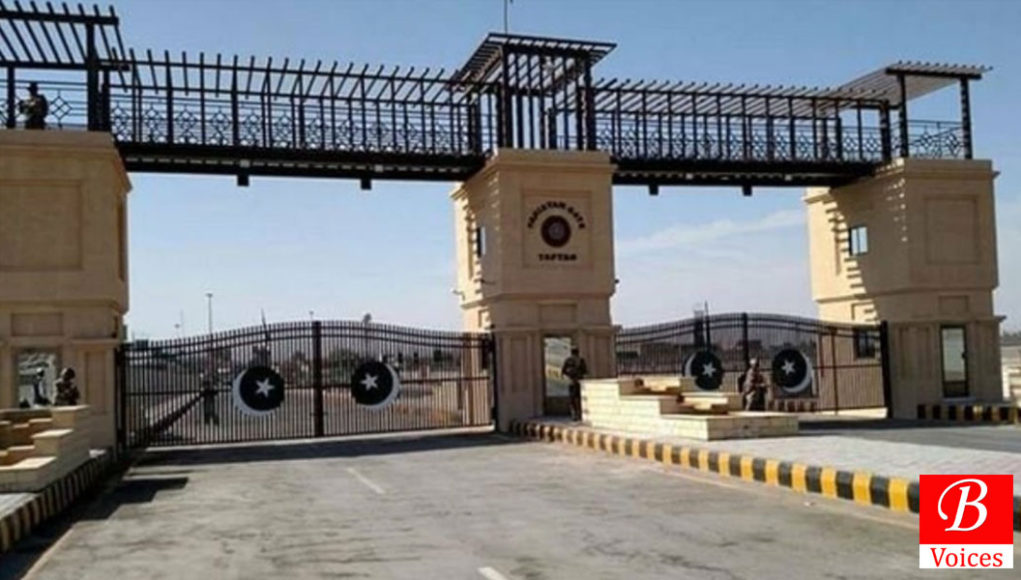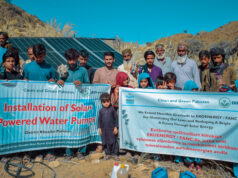Adnan Aamir
Taftan, a small town in Balochistan, has become the attention of the Coronavirus debate in Pakistan for all the wrong reasons. This town is the main border entry point between Pakistan and Iran and unfortunately became a cause of spreading novel coronavirus in all four provinces. Before naively terming Taftan as Wuhan of Pakistan it’s important to know the ground realities and what wrong in the last three weeks.
In the third week of February, the outbreak of Coronavirus became apparent in Iran. As a reaction, Pakistan closed its border with Iran on 23rd February and suspended all cross border movements. However, thousands of Pakistani citizens, most of them Shiite pilgrims, camped on the other side of the border. Therefore, on 28th February Pakistan had to reopen the border, a decision criticized by many as the root cause of Coronavirus spread in Pakistan.
Read also: Editorial: Unfair Criticism on Balochistan Government for Taftan Disaster
Once the border was reopened, the provincial government of Balochistan in consultation with the federal government devised the entry policy. Pakistani citizens who had visited Iran for business, recreation or studies were only screened with thermal guns and let go to their homes in Pakistan. As per Commissioner of Rakhshan division, as quoted in local media, 1704 people were allowed entry into Pakistan through this mode. Secondly, all the pilgrims – called Zaireen locally – were put in makeshift quarantine camps in Taftan town.
Taftan is a small transit border town located at a distance of 630 KM in the south-west of capital Quetta. With a population of approximately 14,000 people, Taftan is the main trading point of the Chagai district of Balochistan. Taftan is an under-developed town, like most parts of Balochistan, and it lacks even the basic infrastructure to host a few thousand people. However, the decisions made by governments in Quetta and Islamabad put over 4,000 people there.
On 28th February, Zafar Mirza – Special Assistant to Prime Minister on Health – visited Taftan and termed the arrangements satisfactory. However, contrary to his claims the pilgrims were made to live in abysmal conditions in Taftan for what was supposed to be a quarantine but it was not.
Manzoor Ahmed, a local journalist who visited the quarantine camps, told The Friday Times that the camps were like tents for flood victims. He highlighted the lack of preventive measures required for quarantine and narrated that pilgrims were freely mixing not only among themselves but also with the local population of Taftan. “Officials supervising the camps and the security personnel were roaming around without even wearing masks,” he said.
Pilgrims reportedly were not provided proper facilities such as hygienic lavatory and food of their choice. As a result, they protested many times and on 9th March, they broke down the cordons of the quarantine camps and started marching towards Quetta. Later, the local administration negotiated with them and convinced them to come back to their camps. Some people among them, according to local sources in Taftan, allegedly fled and their whereabouts are not known.
Initially, there were no medical facilities available for testing the quarantined pilgrims. The federal government later sent a BSL-3 mobile Lab, which was not operational for a few days due to a lack of stable power supply. It was the same mobile lab, which discovered for the first time that people quarantined in Taftan are infected with Coronavirus.
Moreover, on 13th March the first batch of the pilgrims completed their 14-day quarantine. The same day 1928 people were discharged from Taftan camps and sent to their hometowns. 471 of them, who belonged to Quetta, were again quarantined in Quetta and the rest of them were sent to all three other provinces. Once these pilgrims reached their respective provinces, they were tested again and put in quarantine. As of Tuesday night, 134 of these pilgrims have tested positive for coronavirus in Sindh, 15 in Khyber Pakhtunkhwa and 26 in Punjab.
Once the pilgrims held in Taftan tested positive, it started a national outrage. As a response, the government again closed the border with Iran on 16th March. Still, more than 2,700 pilgrims are held in quarantine at Taftan and government of Balochistan was making preparations to send them to their respective provinces, till the time of filing of this report. However, the media bashing of the Balochistan government had already started for its role in the Taftan disaster.
Balochistan government cannot be absolved for its responsibility in the Taftan disaster but the federal government bears more responsibility for this fiasco. Opening and closing of borders, dealing with matters of cross border movement of pilgrims and their quarantine in case of health emergencies fall under the ambit of the federal government. It was the responsibility of the Islamabad government but it delegated the case to the Quetta government without realizing the capacity problems. The federal government turned a blind eye from Taftan when it was supposed to be taking care of everything and that’s the prime reason behind the disaster which later unfolded in Taftan.
Secondly, the poor arrangements in Taftan cannot be viewed in isolation from the under-development in Balochistan. A province with 71% of people living below the poverty line and lacking basic infrastructure, Balochistan’s towns by no means are in a position to deal with such a crisis. Taftan has been an international border crossing point for Pakistan for the last 72 years and yet the federal government has not spent even meager resources to develop this town. If Taftan had received the attention of the federal government over the years then today it would have been in a better condition to take care of the pilgrims and avert this disaster. This is a very opportune example of the cliché that Pakistan cannot meaningfully develop without development in Balochistan.
As of this moment, confirmed Coronavirus cases in Balochistan have risen to 16. Still, the province has not got any major support from the federal government. World Health Organization (WHO) is providing the province with basic equipment needed to deal with this crisis. This is further affecting the crisis response capacity of the Balochistan government.
The need of the hour is that the federal government should provide resources to Balochistan and other provinces in the time of this national emergency and it must behave above party lines. At the same time, the government of Balochistan also needs to investigate what went so wrong in Taftan and who is responsible on their end for the poor arrangements.
Originally published in The Friday Times
Share your comments!








